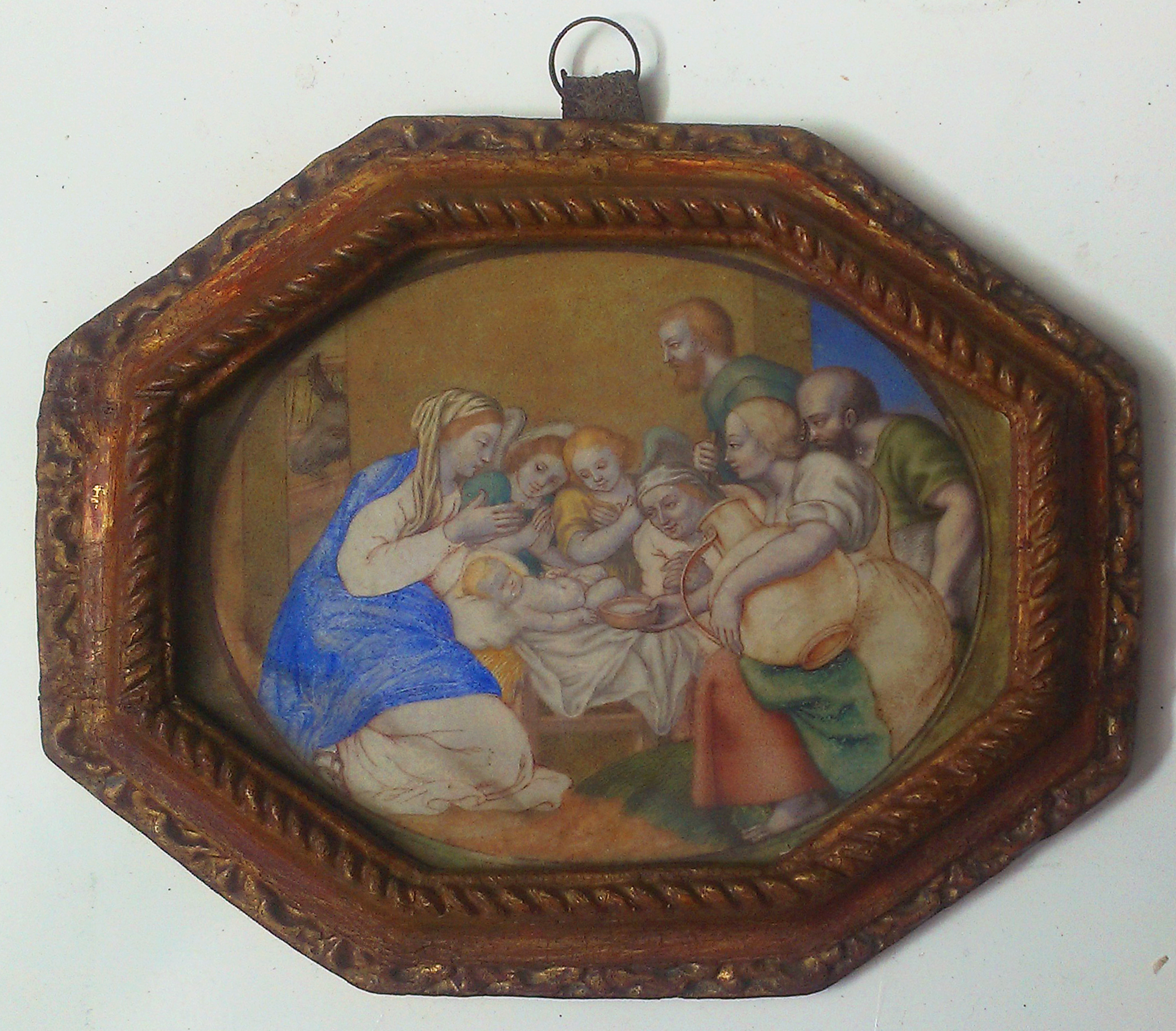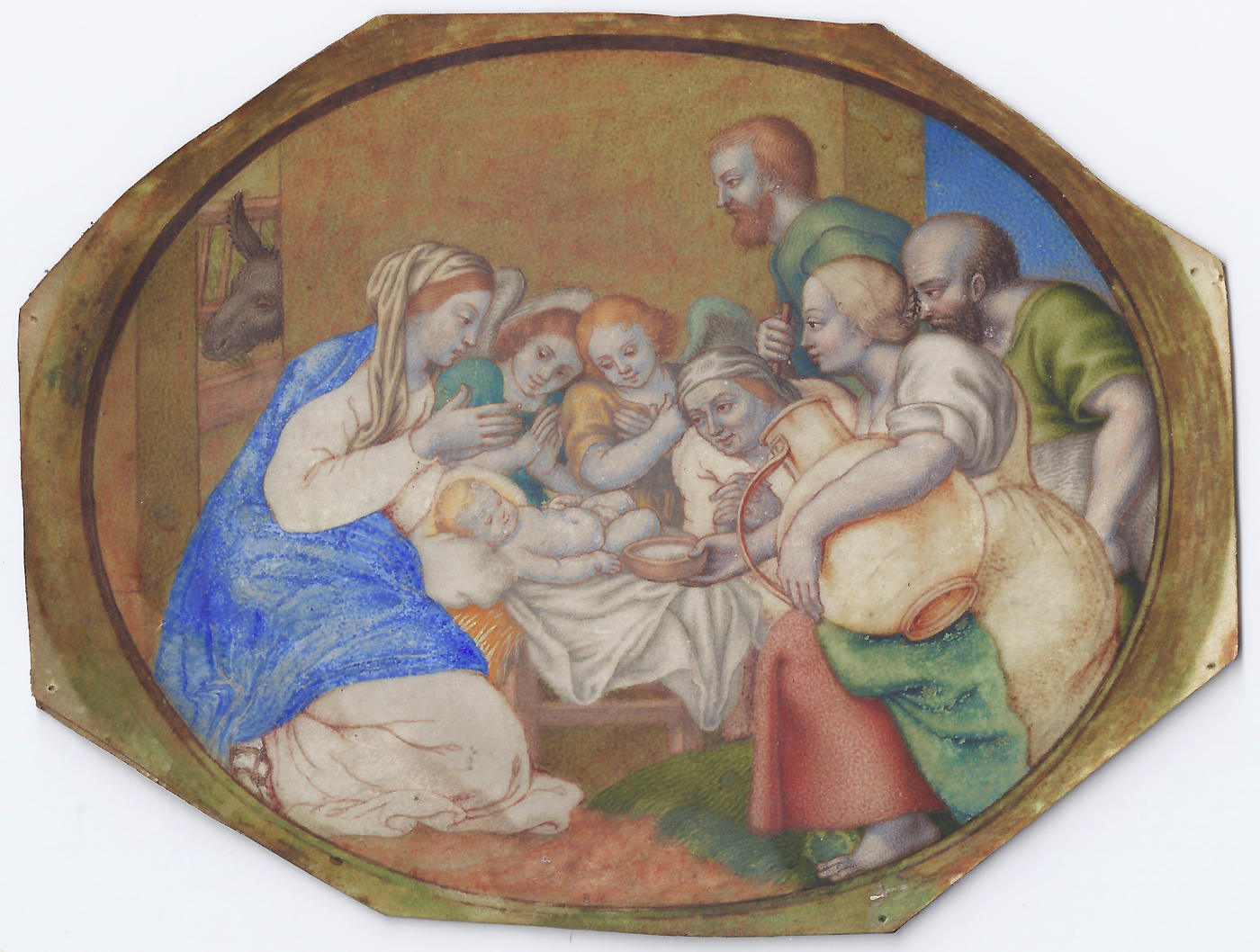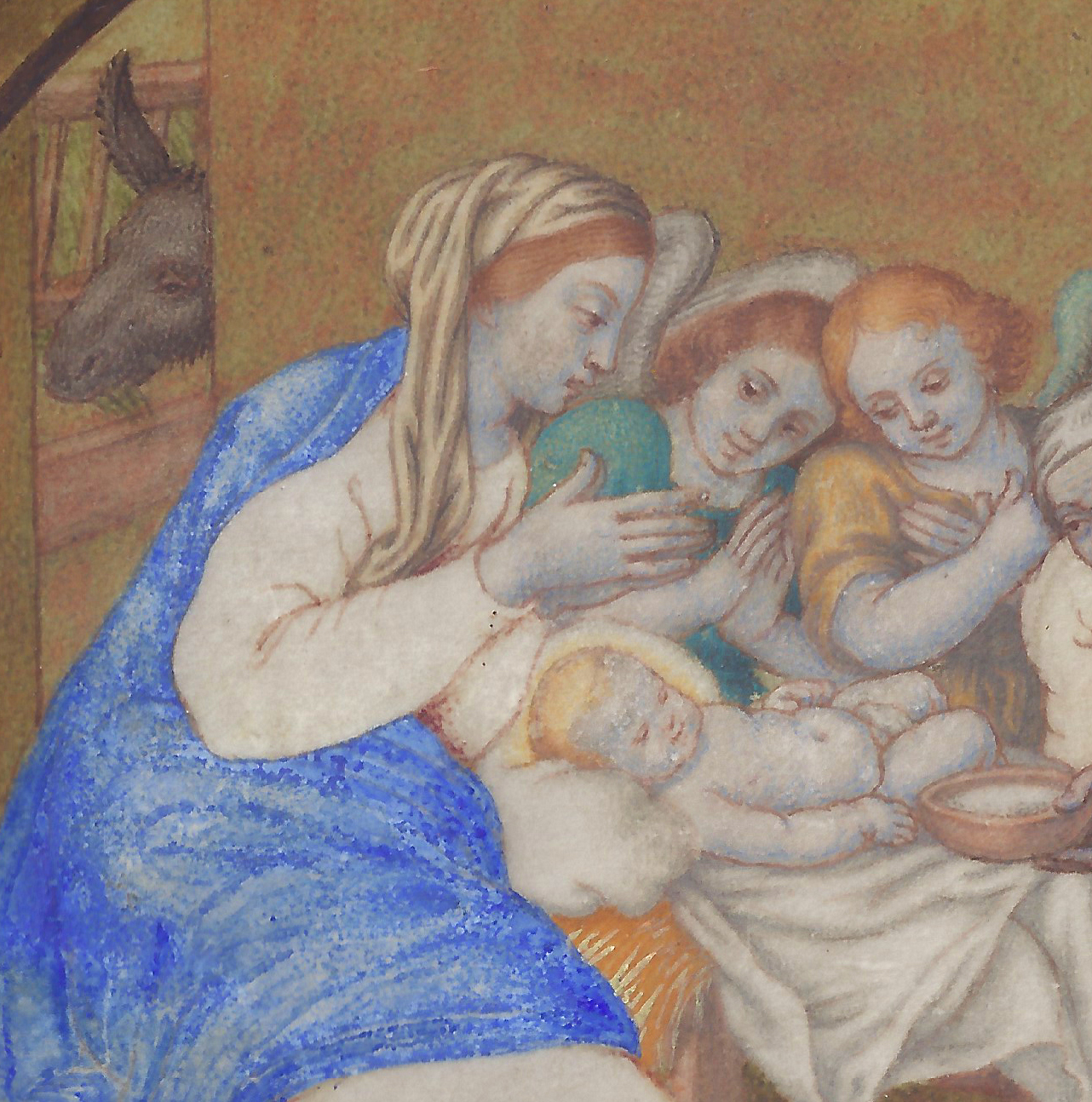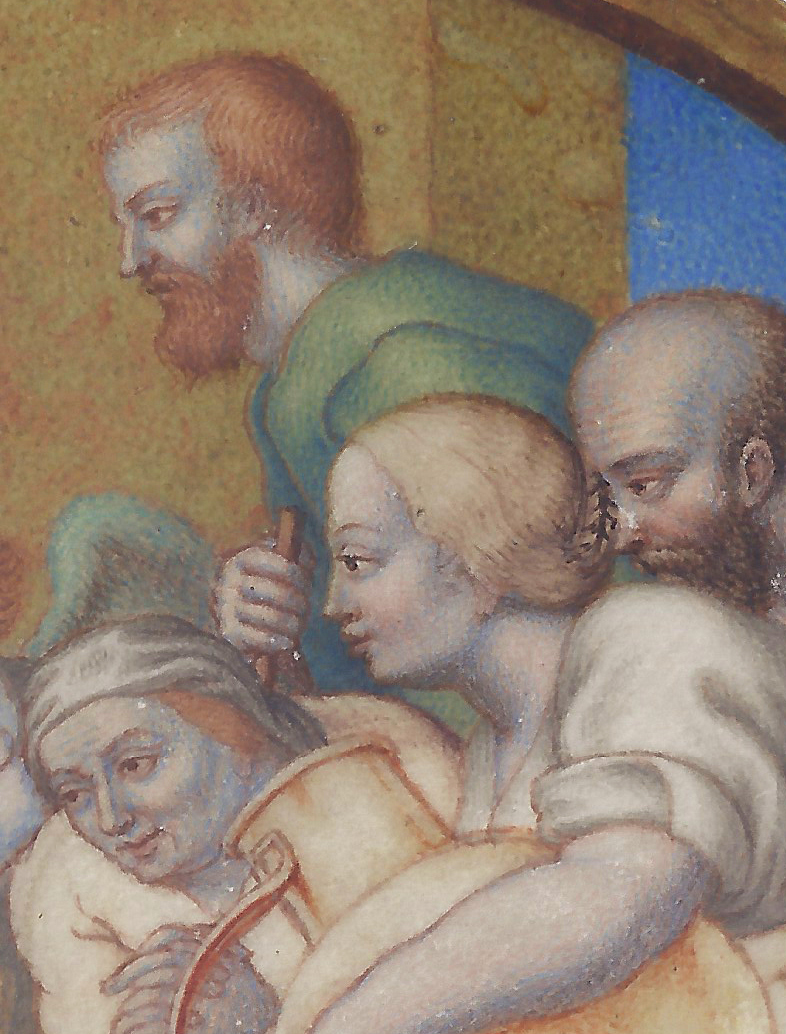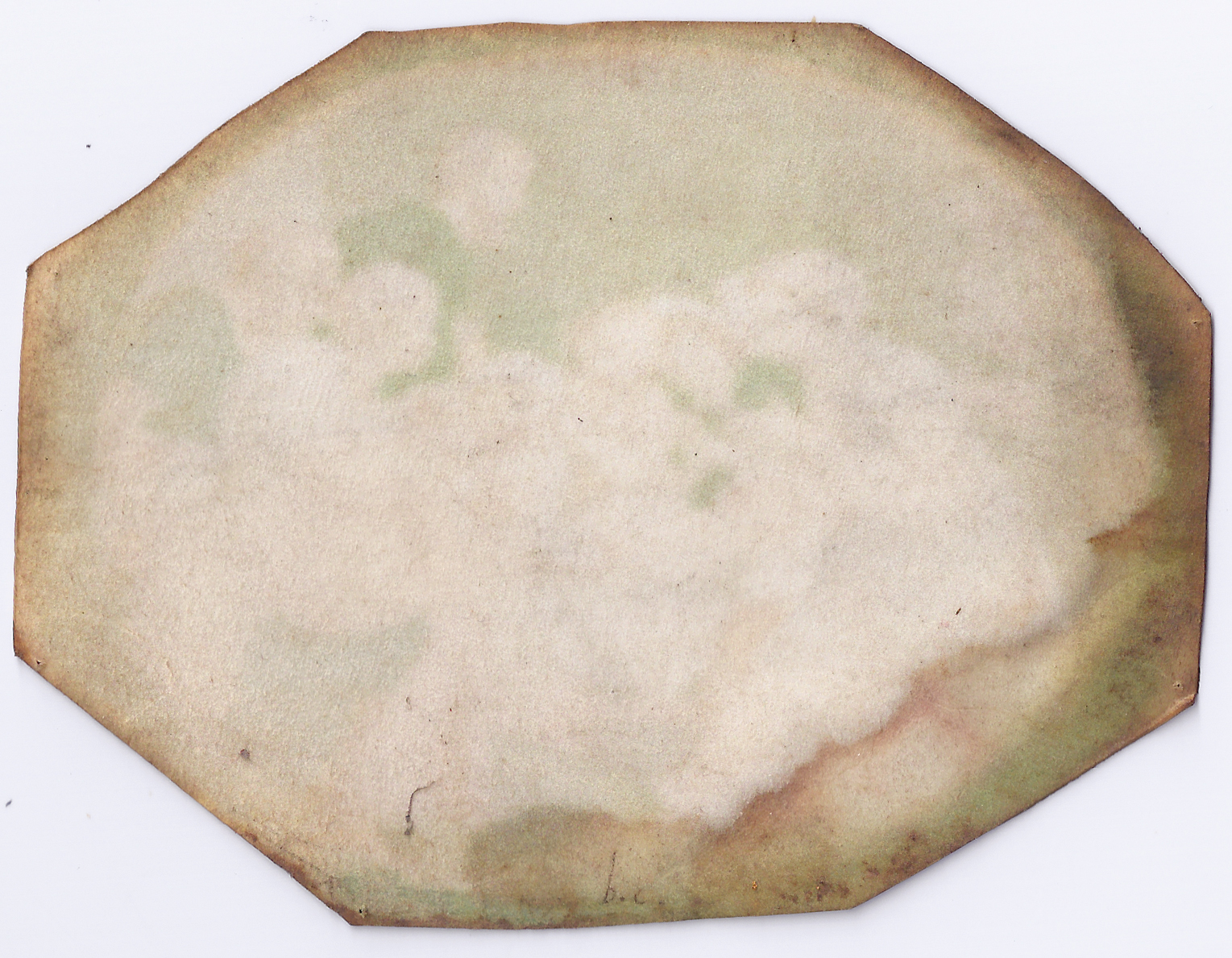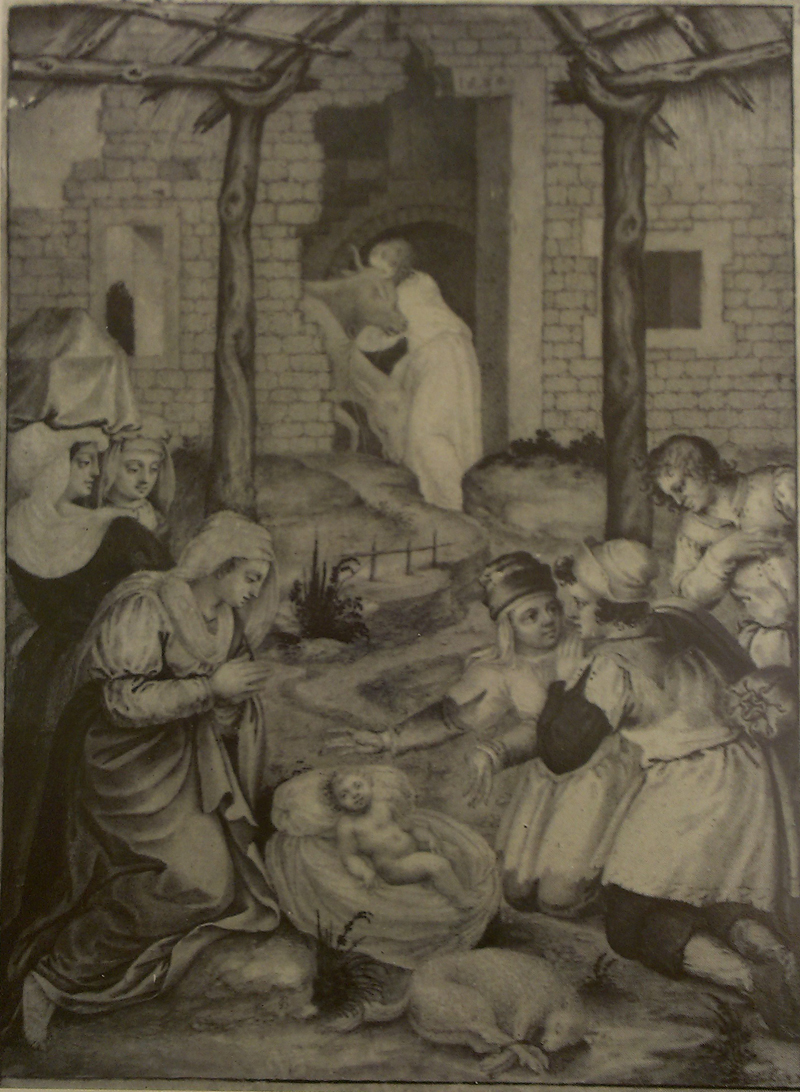GIOVANNI BATTISTA CASTELLO, called IL GENOVESE (Genoa 1547 – 1639 Genoa)
Giovanni Battista Castello, called il Genovese (Genoa 1547 – 1639 Genoa)
The Adoration of the Shepherds
Pen and brown ink and watercolour on vellum, in a drawn oval, octagonal, 95 x 125 mm
Framed in a 17th-century carved and gilded octagonal frame
Monogrammed ‘b.c.’ (pen and brown ink, verso)1
Provenance
Private collection, The Netherlands
***
Giovanni Battista Castello was born in Genoa, the elder brother of the artist Bernardo Castello (1557–1629).2 He is nicknamed ‘il Genovese’ to distinguish him from Giovanni Battista Castello, il Bergamasco (c.1509–c. 1569). Giovanni Battista studied with Luca Cambiaso (1527–1585), the leading artist in late sixteenth-century Genoa, and soon established a reputation as one of the foremost miniaturists of his day. He made a particular speciality of detailed scenes on parchment or vellum. His fame spread as far as Spain, where he was engaged by Emperor Philip II on the illumination of the Royal choir books in the Escorial in 1584.
Castello was back in Genoa by at least 1590, and was commissioned by Margaret of Austria, queen-consort of Philip III in 1599 to copy an icon in the church of San Bartolomeo degli Armeni. The last years of the sixteenth and the first two decades of the seventeenth century saw Castello at the peak of his activity, producing the small, highly finished religious subjects praised for their ‘colorita con esquisitezza maravigliosa’ by Raffaello Soprani in his Vite de Pittori, Scoltori, et Architetti Genovesi of 1674. His sons Girolamo and Giovanni Gregorio also became artists.
Among Castello’s most favoured compositions were depictions of the Adoration of the Shepherds and the Adoration of the Kings. Many examples exist, originally possibly used for private devotional purposes, although their owners would have been particularly entranced by their richness of colour and finesse of detail. An Adoration of the Shepherds of 1584 by Castello shows the Madonna in an almost identical position (fig.).3
SOLD
1. For Battista Castello. The ‘b.c.’ monogram was Castello’s usual way of signing his works, sometimes (in larger works) accompanied by a date and ‘genova’.
2. For the artist, see Clario Di Fabio, Gio. Battista Castello, “il Genovese”: miniatura e devozione a Genova fra Cinque e Seicento, exh. cat. Genoa (Galleria di Palazzo Bianco) 1990 and Mary Newcome-Schleier, Disegni genovesi dal XVI al XVIII secolo, Florence 1989, p. 45.
3. Watercolour on vellum, 189 x 139 mm; signed and dated 1584; Sotheby’s, London, 5 July 1976, lot 19, repr. p. 34.
